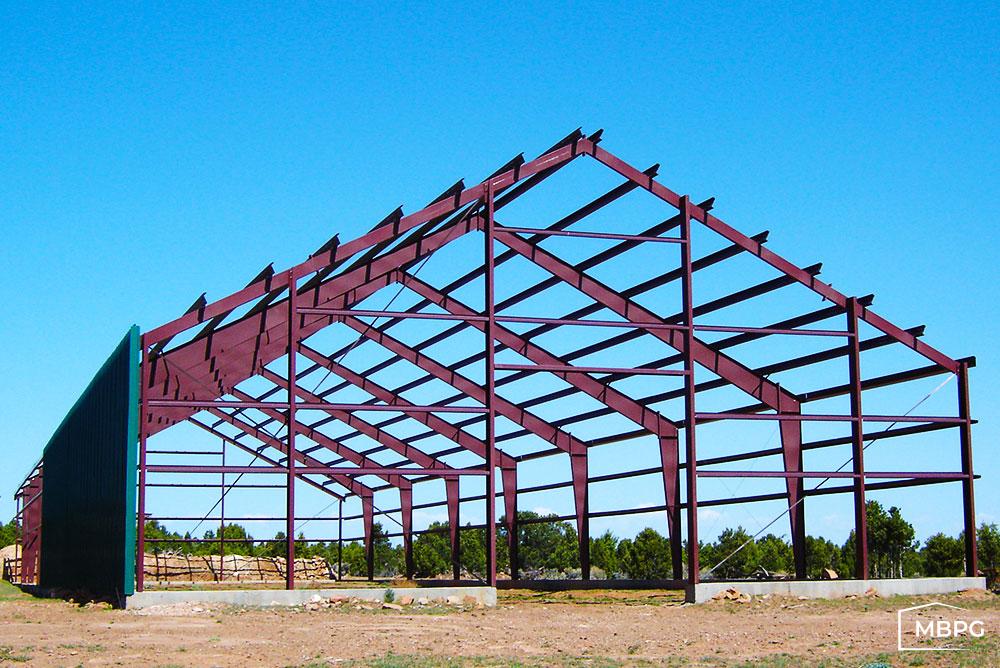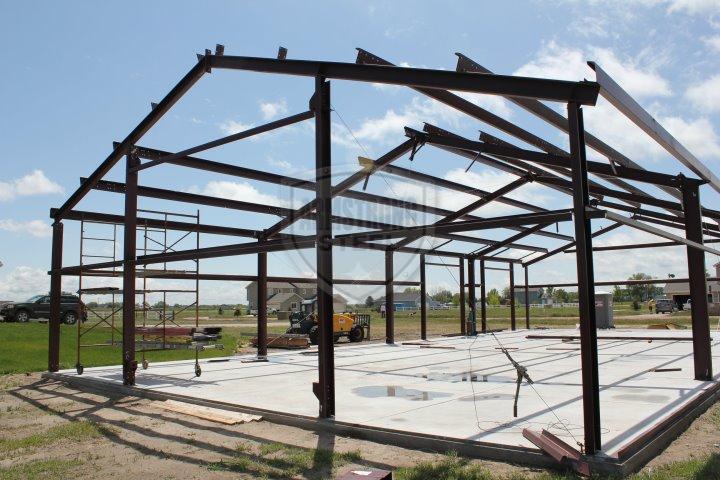Expertly Constructed Steel Buildings: Professional Services for Long-Lasting Results
Expertly Constructed Steel Buildings: Professional Services for Long-Lasting Results
Blog Article
The Competitive Advantage of Steel Buildings: Why Select This Superior Alternative
Steel buildings have emerged as an engaging option in the realm of construction for a wide range of factors. The affordable edge that steel structures hold prolongs much past their initial appeal, making them a recommended choice for those seeking long life and flexibility in their building tasks.
Durability and Durability
In the realm of building and construction, durability and resilience are fundamental facets that underscore the worth recommendation of steel buildings. Steel is renowned for its robustness and capacity to stand up to different ecological problems, making it an ideal selection for resilient structures. Unlike typical materials like timber or concrete, steel does not warp, split, or rot in time, making certain that a steel building stays structurally audio for decades.
One vital aspect adding to the resilience of steel buildings is their resistance to bugs such as termites, which can create significant damage to wooden structures. Steel is additionally non-combustible, minimizing the risk of fire damage and enhancing the safety of residents. Furthermore, steel buildings need very little upkeep contrasted to various other building and construction products, conserving both money and time in the future.
Furthermore, developments in steel manufacturing innovation have even more improved the durability of steel buildings by enhancing rust resistance and structural stability. With proper care and maintenance, a well-constructed steel building can last more than half a century, giving a reputable and long lasting remedy for numerous construction needs.
Cost-Effectiveness
With its many financial benefits, steel as a building material provides an engaging affordable solution for numerous building jobs. The cost-effectiveness of steel structures stems from a number of vital variables. First of all, the initial cost of steel may be higher than some standard materials, but the lasting cost savings are significant. Steel frameworks need minimal upkeep, lowering repair service and replacement prices gradually. Furthermore, steel is highly resilient, which converts to lower insurance policy costs because of lowered risk of damage from components such as fire, insects, and all-natural disasters.
In addition, the building and construction process with steel is faster and extra efficient compared to various other products, leading to decreased labor expenses and earlier task conclusion. Steel structures are also energy-efficient, enabling cost savings on home heating and air conditioning expenses. The flexibility of steel enables very easy expansion or modification, saving on future building expenses by removing the need for comprehensive restorations. Generally, the cost-effectiveness of steel structures makes them a clever investment for various construction needs.
Flexibility in Design
The adaptability of steel as a building product permits a wide variety of cutting-edge style possibilities in construction projects. Steel buildings offer unequaled convenience in layout, making them a preferred selection for building contractors and architects. Among the vital advantages of steel is its strength-to-weight ratio, which enables the building of huge, open rooms without the need for extreme assistance columns. This architectural performance permits for modern and innovative layouts that may not be feasible with various other building materials.
Steel's adaptability also permits for customization to satisfy specific style needs. Whether it's curved roofings, detailed exteriors, or distinct geometric shapes, steel can be built to bring essentially any type of layout principle to life. Furthermore, steel buildings can be conveniently broadened or changed, offering future flexibility for adapting to transforming demands.
Additionally, using steel in building and construction permits sustainable style methods. Steel is very recyclable, lowering environmental impact and promoting green construction. Its sturdiness and official site resistance to rust make certain that steel structures maintain their aesthetic appeal and structural stability for several years to come. Eventually, the convenience of steel in design not only improves the aesthetic allure of buildings but likewise adds to their longevity and performance.

Lasting Building Practices
Building upon the foundation of adaptability in layout, lasting construction methods in steel buildings play a crucial role in mitigating environmental effect and advertising lasting environmentally friendly options. When steel structures get to the end of their lifecycle, the steel parts can be reused and used in new construction jobs, decreasing the need for raw products and lessening waste. In addition, the power performance of steel structures contributes to sustainability efforts.

Fast Building And Construction Timeline

Moreover, the streamlined procedure of putting up steel frameworks lowers building and construction time dramatically. The simpleness of steel structure style and the simplicity of assembly add to faster task conclusion, making it an excellent selection for customers with time-sensitive needs (steel buildings). In addition, the capacity to deal with different components simultaneously, such as site prep work and structure construction together with steel construction, more speeds up the overall construction timeline
Verdict
To conclude, steel structures provide a competitive benefit as a result of their toughness, cost-effectiveness, adaptability in style, lasting building practices, and quick building timeline. These aspects make steel structures a premium choice for various construction projects, giving lasting benefits and worth. Selecting steel buildings can result in enhanced efficiency, effectiveness, and sustainability in the construction industry.
Unlike typical products like wood or concrete, steel does not warp, crack, or rot over time, ensuring that a steel building continues to be structurally audio for decades.
The flexibility of steel as a building material this allows for a wide array of ingenious style opportunities in construction tasks.Structure upon the foundation of convenience in style, sustainable building practices in steel buildings play an essential duty in mitigating environmental effect and promoting long-term green solutions. When steel buildings get to the end of their lifecycle, the steel components can be reused and made use of in new building and construction projects, lowering the demand for raw products and lessening waste.In conclusion, steel structures offer a competitive benefit due to their durability, cost-effectiveness, adaptability in design, sustainable building methods, and rapid building and construction timeline.
Report this page